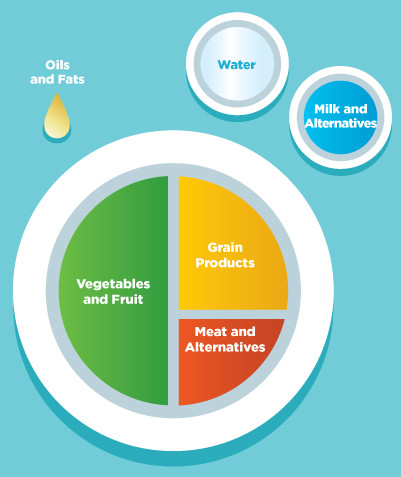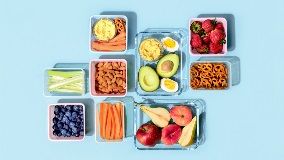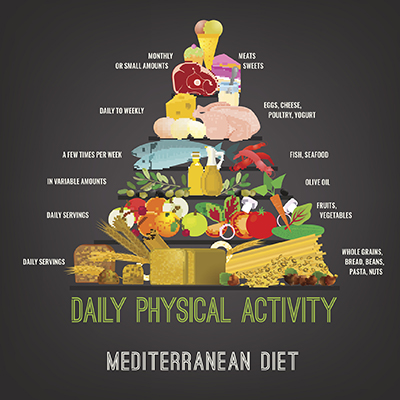
Welcome to our article on 10 key habits for healthy eating.
In this informative and evidence-based piece, we will explore practical and effective strategies such as meal planning and adopting plant-based diets.
We will also discuss the importance of portion control, organic foods, nutrient density, and understanding food labels.
Additionally, we will touch upon topics like eating disorders, dietary restrictions, and the benefits of consuming seasonal foods.
Join us as we empower you with the knowledge and freedom to make informed choices for a healthier lifestyle.
Meal Planning
When it comes to healthy eating, effective meal planning is essential for success. Meal planning involves preparing and organizing meals in advance, ensuring that you have nutritious options readily available throughout the week. This practice not only saves time and money but also helps you make healthier choices.
One key aspect of meal planning is meal prep, which involves cooking and portioning out meals ahead of time. By dedicating a few hours each week to meal prep, you can ensure that you have healthy and balanced meals ready to go, making it easier to resist the temptation of ordering takeout or grabbing unhealthy snacks.

Another integral part of meal planning is grocery shopping. By creating a detailed shopping list based on your planned meals, you can avoid impulse purchases and stick to healthy, whole foods.
Plant-Based Diets
One important aspect of healthy eating habits is adopting a plant-based diet. Plant-based diets are centered around consuming foods that come from plants, such as fruits, vegetables, whole grains, legumes, nuts, and seeds. These diets can offer numerous health benefits, including lower risks of heart disease, high blood pressure, obesity, and certain types of cancer.
Here are some key points to consider when adopting a plant-based diet:
- Incorporate a variety of plant-based protein alternatives, such as tofu, tempeh, legumes, quinoa, and chia seeds.
- Focus on whole foods and minimize processed and refined foods.
- Ensure adequate intake of essential nutrients, such as vitamin B12, omega-3 fatty acids, iron, and calcium, through fortified foods or supplements.
- Experiment with different cooking methods and flavors to make plant-based meals enjoyable and satisfying.
- Gradually transition to a plant-based diet and listen to your body's needs throughout the process.
Portion Control
When it comes to healthy eating, portion control plays a crucial role in maintaining a balanced diet.
Understanding the importance of serving sizes can help individuals make informed choices about their food intake.
Incorporating mindful eating practices and utilizing portion control strategies can further support individuals in managing their portions effectively.
Serving Size Importance
To ensure healthy eating habits, it is crucial to prioritize serving size importance and practice portion control. By being mindful of the amount of food we consume, we can better manage our weight and prevent overeating.

Here are some serving size guidelines and portion size recommendations to help you make informed choices:
- Use your hand as a guide: A serving of protein should be about the size of your palm, a serving of grains should fit in your cupped hand, and a serving of fats should be the size of your thumb.
- Read food labels: Pay attention to the serving size listed on the label to avoid consuming more than recommended.
- Use smaller plates and bowls: This can help you control portions by visually tricking your brain into thinking you're eating more.
- Be mindful of liquid calories: Drinks like soda, juice, and alcohol can contribute to excess calorie intake, so watch your portion sizes.
- Practice portion control at restaurants: Split meals with a friend or ask for a to-go box to save half for later.
Mindful Eating Practices
Mindful eating practices, such as practicing portion control, play a pivotal role in maintaining a healthy and balanced diet.
Mindful eating techniques involve paying attention to the body's hunger and fullness cues, as well as being aware of the portion sizes consumed.
By practicing portion control, individuals can prevent overeating and unnecessary weight gain.
Research has shown that mindful eating benefits include improved digestion, increased satisfaction with meals, and better overall health.
One effective technique is to use smaller plates and bowls, which can trick the mind into feeling satisfied with smaller portions.
Another technique is to eat slowly, allowing time for the brain to register fullness.

Portion Control Strategies
One effective strategy for maintaining portion control is to utilize a quantifier determiner to accurately measure food servings. By using measuring cups, spoons, or a food scale, individuals can ensure they are consuming the appropriate amount of food. This method allows for greater control over portion sizes and can help prevent overeating.
To further support portion control, here are five practical strategies to consider:
- Practice mindful eating: Pay attention to hunger and fullness cues, eat slowly, and savor each bite.
- Use smaller plates and bowls: This visual trick can make your portions appear larger, helping you feel satisfied with less food.
- Read food labels: Look for serving sizes and nutritional information to make informed choices about portion sizes.
- Pre-portion snacks: Divide snacks into individual servings to prevent mindlessly eating from a large bag or container.
- Plan meals ahead of time: Meal planning allows for better portion control as you can portion out meals and leftovers in advance.
Incorporating these strategies can help individuals maintain portion control and support their overall health and wellness goals.
Organic Foods
Incorporating organic foods into your diet is a key habit for maintaining a healthy eating routine. Organic farming, which relies on natural methods of cultivation, avoids the use of synthetic pesticides, herbicides, and fertilizers. This results in produce that is free from harmful chemicals and higher in nutritional value.
Studies have shown that organic foods may contain higher levels of certain nutrients, such as vitamin C, iron, and magnesium, compared to conventionally grown produce. Additionally, organic farming practices promote soil health and biodiversity, which are essential for the long-term sustainability of our food system.
When choosing organic foods, look for the USDA Organic label, which ensures that the product has been grown and processed according to strict organic standards. By opting for pesticide-free produce, you can reduce your exposure to harmful chemicals and support a more sustainable and nutritious food system.
Nutrient Density
Nutrient density refers to the concentration of essential nutrients in a given amount of food. Choosing nutrient-rich foods is an important aspect of a healthy eating plan as they provide a wide array of vitamins, minerals, and other beneficial compounds.

Choosing Nutrient-Rich Foods
A key strategy for promoting a healthy diet is to prioritize foods that are high in nutrients. Nutrient-rich foods provide essential vitamins, minerals, and antioxidants that support optimal health and well-being. When choosing nutrient-rich foods, consider the following shopping tips and meal prepping ideas:
- Opt for whole, unprocessed foods such as fruits, vegetables, whole grains, legumes, and lean proteins.
- Look for colorful produce, as different colors indicate a variety of nutrients.
- Read food labels to identify products that are low in added sugars, sodium, and unhealthy fats.
- Incorporate a variety of plant-based foods into your meals, as they are typically rich in nutrients and fiber.
- Plan your meals and snacks in advance to ensure you have nutrient-rich options available throughout the week.
Benefits of Nutrient Density
When prioritizing nutrient-rich foods, it is important to recognize the numerous benefits that come with their high nutrient density. Nutrient density refers to the concentration of nutrients in a given amount of food. By consuming foods with a high nutrient density, you can maximize nutrient absorption and support overall health and well-being.
One of the key benefits of nutrient density is that it allows you to get more nutrients from fewer calories. This is particularly important for individuals who are looking to maintain a healthy weight or lose weight. By choosing nutrient-dense foods, you can feel satisfied while consuming fewer calories, making it easier to achieve and maintain a healthy weight.
Another advantage of nutrient density is that it supports optimal nutrition. When you consume foods that are rich in essential vitamins, minerals, and antioxidants, you provide your body with the necessary nutrients to function at its best. This can help boost your immune system, improve energy levels, and promote overall vitality.
To take full advantage of nutrient density, consider incorporating nutrient-rich recipes into your meal planning. This can involve using a variety of colorful fruits and vegetables, whole grains, lean proteins, and healthy fats. By diversifying your diet and incorporating a wide range of nutrient-dense foods, you can ensure that you are getting a broad spectrum of essential nutrients.
Maximizing Nutritional Value
To optimize the nutritional value of your meals, it is crucial to focus on the density of essential nutrients. Maximizing nutrient density ensures that you are getting the most bang for your buck when it comes to the nutritional content of your food.
Here are some key strategies to help you maximize the nutritional value of your meals:

- Choose whole, unprocessed foods: These foods are naturally rich in essential nutrients and are not stripped of their nutritional value through processing.
- Include a variety of colorful fruits and vegetables: Different colors indicate different nutrients, so aim to include a rainbow of produce in your meals.
- Prioritize lean sources of protein: Protein is essential for building and repairing tissues, so choose lean sources like poultry, fish, beans, and legumes.
- Incorporate healthy fats: Healthy fats found in foods like avocados, nuts, and seeds provide essential nutrients and help maximize satiety.
- Practice healthy snacking: Opt for nutrient-dense snacks like Greek yogurt, fruits, vegetables with hummus, or a handful of nuts to keep you satisfied between meals.
Hydration
Proper hydration is essential for maintaining overall health and well-being. Water plays a crucial role in our bodies, aiding in digestion, nutrient absorption, temperature regulation, and the removal of waste products.
Staying hydrated is especially important during physical activity or in hot weather when we lose more fluids through sweat. The recommended water intake varies depending on factors such as age, sex, weight, and activity level. However, a general guideline is to drink at least eight glasses of water per day.
It is also important to listen to our bodies and drink when we feel thirsty. Additionally, incorporating hydrating foods such as fruits and vegetables can contribute to our overall water intake.
Food Labels
Continuing from the previous subtopic on hydration, understanding food labels is crucial for making informed choices about our diet and overall health. Food labels provide valuable information about the nutritional content, ingredients, and potential allergens in the products we consume. Here are five key points to consider when reading food labels:
- Check the serving size: Pay attention to the serving size listed on the label to ensure you are accurately tracking your calorie and nutrient intake.
- Look for organic foods: Organic foods are free from synthetic pesticides, hormones, and genetically modified organisms (GMOs), making them a healthier choice for both our bodies and the environment.
- Evaluate the ingredient list: Be mindful of added sugars, unhealthy fats, and artificial additives. Ingredients are listed in descending order, so the first few ingredients are the most prominent in the product.
- Understand the nutrient content: Pay attention to the amount of nutrients like sodium, saturated fat, and added sugars. Opt for products that are low in these components.
- Use the % Daily Value (%DV): The %DV on food labels helps you understand how the nutrients in a serving of the product contribute to your daily recommended intake.
Eating Disorders
One important aspect to address when discussing healthy eating habits is the prevalence and impact of eating disorders. Eating disorders are serious mental health conditions that affect a person's relationship with food and their body image. They can have devastating consequences on physical and psychological well-being.
When it comes to eating disorder treatment, it is important to seek professional help from qualified healthcare providers, such as therapists and registered dietitians, who specialize in this field. Treatment may involve a combination of therapy, nutritional counseling, and medical intervention. It is crucial to address not only the symptoms but also the underlying factors contributing to the development of the eating disorder.
Additionally, promoting a healthy body image and self-acceptance is essential in preventing eating disorders and supporting long-term recovery.

Dietary Restrictions
Addressing dietary restrictions is an important aspect of promoting healthy eating habits, building upon the discussion of eating disorders. Whether due to allergies, intolerances, or personal preferences, dietary restrictions play a crucial role in shaping our food choices. Here are some key points to consider when navigating dietary restrictions:
- Awareness: Being aware of your specific dietary restrictions is the first step towards making informed choices.
- Education: Acquiring knowledge about different dietary restrictions can help you understand the impact they have on your body and identify suitable alternatives.
- Meal planning: Planning your meals in advance can ensure that you have appropriate options available and reduce the risk of accidentally consuming restricted ingredients.
- Reading labels: Carefully reading food labels can help you identify hidden sources of allergens or gluten-containing ingredients.
- Exploring gluten-free options: For individuals with gluten restrictions, exploring gluten-free alternatives can open up a world of delicious and nutritious options.
Seasonal Foods
Seasonal eating offers several benefits for both our health and the environment.
By consuming foods that are in season, we can enjoy produce at its peak freshness and nutritional value.
Additionally, choosing seasonal foods supports sustainable agricultural practices and reduces the carbon footprint associated with transporting out-of-season produce.
Benefits of Seasonal Eating
Eating seasonal foods offers numerous benefits for individuals striving to maintain a healthy diet. Here are some advantages of seasonal eating:
- Nutritional value: Seasonal produce is often picked at its peak ripeness, meaning it is packed with nutrients and flavor.
- Environmental sustainability: By choosing seasonal foods, you support local farmers and reduce the carbon footprint associated with long-distance transportation.
- Cost-effectiveness: Seasonal produce is typically more affordable due to its abundance, allowing you to stretch your grocery budget further.
- Variety: Eating seasonally encourages you to try new fruits and vegetables, introducing a wider range of nutrients into your diet.
- Taste and freshness: Seasonal foods are known for their superior taste and freshness, as they are harvested and consumed at the peak of their flavor.
Incorporating seasonal foods into your meal planning can not only enhance your health but also support local communities and promote environmental sustainability.
Sustainable Food Choices
Incorporating the practice of selecting seasonal foods into your meal planning not only supports local communities and promotes environmental sustainability, but it also offers a multitude of benefits for maintaining a healthy diet.

By choosing foods that are in season, you are more likely to support local farmers and reduce your carbon footprint.
Seasonal foods are often fresher and more nutrient-dense, as they are harvested at their peak ripeness.
Additionally, opting for seasonal produce can help reduce food waste, as these foods are more abundant and less likely to spoil.
When you buy local, you also have the opportunity to connect with your community and learn about different food sources.
Frequently Asked Questions
How Can I Incorporate Meal Planning Into My Busy Schedule?
Incorporating meal planning into a busy schedule can be challenging, but it is essential for maintaining a healthy diet. Here are some tips to help you incorporate meal planning into your busy schedule.
Can a Plant-Based Diet Provide All the Necessary Nutrients for Optimal Health?
A plant-based diet can provide all the necessary nutrients for optimal health. Plant-based nutrition emphasizes consuming nutrient-rich diets that are abundant in fruits, vegetables, whole grains, legumes, and nuts, which can meet nutritional requirements when appropriately planned.
What Are Some Practical Tips for Practicing Portion Control?
Practical tips for portion control include using smaller plates, measuring food portions, and being mindful of hunger and fullness cues. Strategies for meal planning can help ensure balanced meals and prevent overeating.

Are Organic Foods Really Worth the Extra Cost?
Organic foods may have some nutritional differences compared to conventional foods, but whether they are worth the extra cost is a personal decision. Financially, buying organic can be more expensive, but some individuals choose it for environmental and health reasons.
How Can I Ensure I'm Getting Enough Nutrients in My Diet While Following a Plant-Based Eating Plan?
Ensuring nutrient intake while following a plant-based eating plan involves focusing on a variety of foods to meet nutritional needs. Incorporating whole grains, legumes, nuts, seeds, and fortified foods can help provide essential nutrients such as protein, iron, calcium, and vitamin B12.






